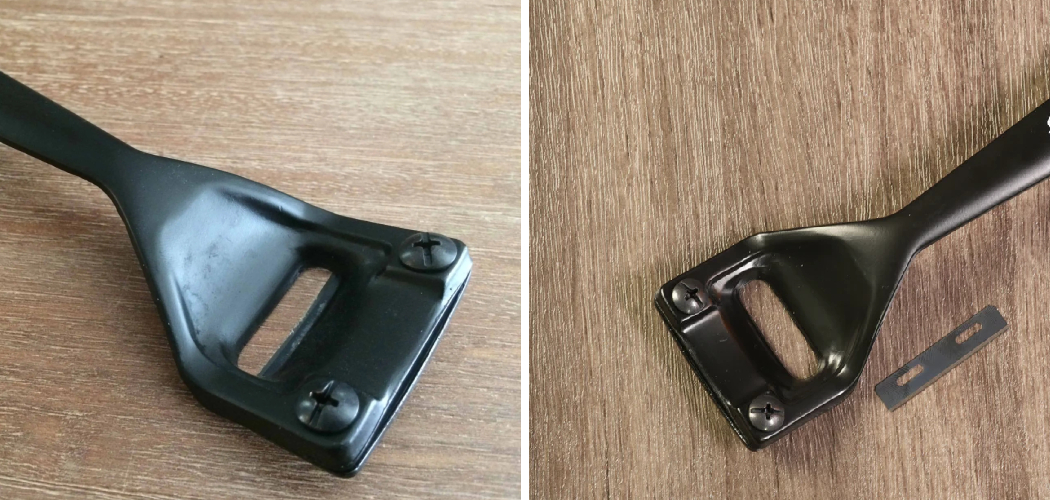If you’re working with leather, you may need to thin or taper a piece of it. This is where a leather skiver comes in handy. A skiver is a type of cutting tool used to shave thin slices off of leather, helping to reduce the thickness of the material and create a tapered edge. But if you’ve never used a skiver before, it can be a little daunting.

In this blog post, we’ll walk you through how to use a leather skiver, including some tips and techniques to help you get the best results.
Can You Use a Leather Skiver?
Crafting is a timeless hobby that allows us to explore our creative side, and leather crafting is no exception. One tool that often comes up in discussions among leather crafters is the leather skiver. But what exactly is a skiver, and can you use it when working with leather?
Simply put, a skiver is a specialized tool that allows you to thin out leather pieces for a more manageable and polished look. While it may seem daunting at first, with practice and patience, using a skiver can yield beautiful results and take your leather crafting to the next level. So, if you’re ready to tackle this tool and up your crafting game, try it and see the difference for yourself.
Why Should You Use a Leather Skiver?
When it comes to leatherworking, a leather skiver is an essential tool to have in your arsenal. Not familiar with this handy item?
Essentially, a leather skiver can be used to thin and taper leather to a desired thickness, which offers endless possibilities for leather projects. But why should you bother with a leather skiver in the first place? The answer is simple: it makes your leatherworking experience smoother and more efficient.
With a leather skiver, you’ll have more control over your leather, allowing you to achieve the specific thickness you want for your project. Plus, the result will be more polished and professional-looking. Whether you’re a seasoned leatherworker or new to the craft, you’ll quickly find that a leather skiver is a must-have tool for any project.
How to Use a Leather Skiver: Tips and Techniques
1. Prepare Your Work Area
Before you begin using your leather skiver, you want to make sure that you have a good work area set up. You’ll need a flat, stable surface to work such as workbench as well as a cutting mat to protect the surface. You will also need a sharp blade for your skiver, which can be adjusted based on the thickness of the leather you’re working with.
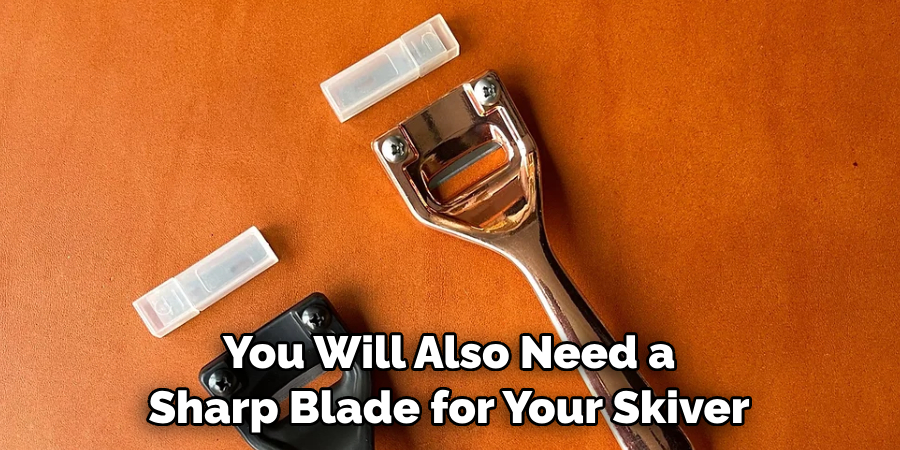
2. Practice on Scraps
If you’re new to using a leather skiver, it’s a good idea to start by practicing on leather scraps. This will help you get a feel for the tool and how it works, as well as help you adjust the blade and technique to achieve the desired result. Plus, it’s always better to make mistakes on a scrap than on your final piece!
3. Find the Right Angle
When using a leather skiver, it’s important to hold it at the right angle. The blade should be held at a slight angle to the surface of the leather, with the sharp edge pointed toward the direction you want to taper. This will help you shave off thin, even slices of leather. Experiment with different angles until you find the best one for you.
4. Go Slowly and Steadily
It’s important to go slowly and steadily when using a leather skiver. This will help you avoid cutting too deeply into the leather or creating uneven areas. Take your time and make small, controlled movements with the tool, adjusting the depth of the cut as needed.
5. Use a Strop
Next, to keep your leather skiver blade sharp and in top condition, it’s a good idea to use a strop. This is a type of leather strip that is coated with a polishing compound and is used to sharpen and hone the blade of the tool. Run the blade over the strop several times before each use to keep it in optimal condition.
6. Maintain Your Skiver
Proper maintenance is key when it comes to using a leather skiver. After each use, clean the blade thoroughly and store it in a dry place. If the tool becomes dull or damaged, replace the blade immediately to avoid any accidents or mistakes.
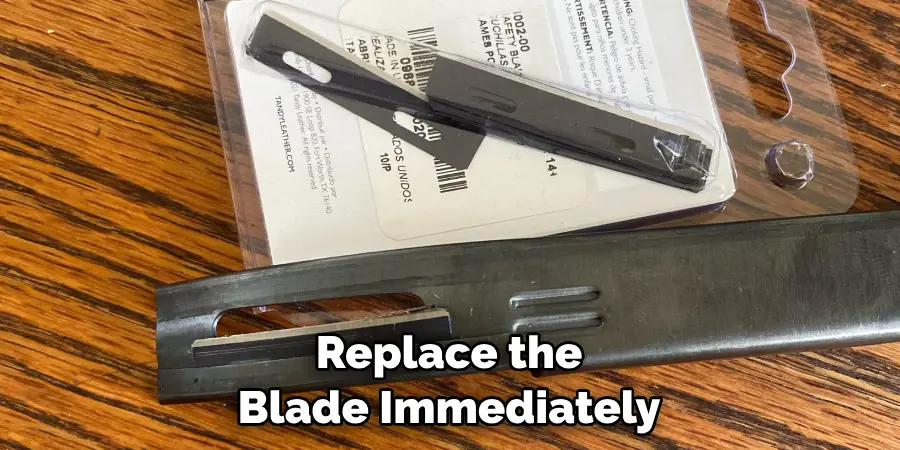
7. Get Creative!
Once you’ve mastered the basics of using a leather skiver, don’t hesitate to get creative with your projects! There are endless possibilities for incorporating tapered edges and smooth curves into your leatherwork. With practice and patience, you can create beautiful pieces that showcase your skills and creativity.
Remember, learning how to use a leather skiver takes time and practice. Don’t get discouraged if you don’t get it right on your first try. Keep these tips in mind and keep honing your skills, and soon, you’ll be creating professional-quality leather pieces with ease.
Some Considerations Things When You Need to Use a Leather Skiver
Leather skiving can be tricky, even for the most experienced leather crafters. It’s not just a matter of shaving off layers of leather until you get the desired thickness. You need to take into account several other considerations, such as the type of leather you’re using, the angle of the blade, and the speed of the machine.
Using a leather skiver requires a delicate touch and a deep understanding of the materials and tools. But once you master this technique, you can create precise and uniform cuts that will enhance the quality of your leather projects. So, if you’re looking to up your leather game, consider adding a leather skiver to your toolkit and taking the time to master this skill.
5 Benefits of Using a Leather Skiver
1. Durability
Leather skivers are incredibly durable tools that can be used for various tasks. They are designed to last a long time and can handle even the toughest leather projects. The blades of the skiver are made from high-quality steel, designed to retain its sharpness over time. Additionally, the handle is made from hardwood or plastic, which makes it comfortable to hold and use.
2. Versatility
A leather skiver is also incredibly versatile and can be used for various tasks. It can be used to cut leather pieces into different shapes and sizes, as well as trim away excess material. It can also be used to remove imperfections or blemishes on leather items, as well as create decorative edges or patterns on the surface of the leather.
3. Precise Cuts
The blades of a leather skiver are designed with precision in mind, allowing you to make precise cuts with ease. This makes it ideal for working on detailed projects such as wallets, purses, belts, and other small items that require exact measurements and precision cuts.
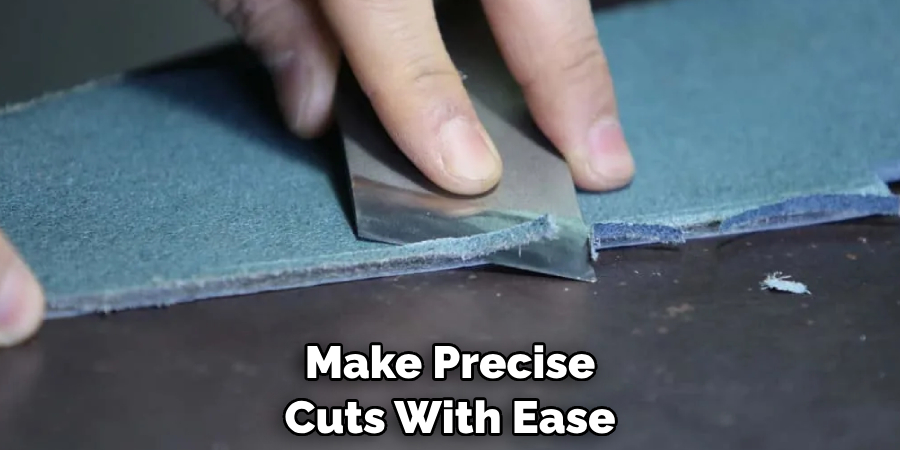
4. Economical
Leather skivers are also very affordable tools that offer great value for money. They are relatively inexpensive compared to other cutting tools and can be found at most craft stores or online retailers at reasonable prices.
5. Easy To Use
Finally, leather skivers are incredibly easy to use and require minimal setup or maintenance. All you need to do is insert the blade into the handle and tighten it securely before using it on your project. The blades can easily be removed for sharpening or replacement when needed.
4 Common Mistakes People Make When Trying to Use a Leather Skiver
1. Not Preparing the Leather Properly
One of the most common mistakes people make when using a leather skiver is not preparing the leather properly. Before attempting to skive the leather, it must be softened and stretched out to be worked with more easily. If you do not take the time to properly prepare the leather, you may end up with uneven edges or an uneven surface.
2. Using Too Much Pressure
Another mistake people often make when using a leather skiver is applying too much pressure. When skiving, it is important to use just enough pressure to remove excess material without damaging the leather. Applying too much pressure can cause holes or tears in the material, making it unusable for your project.
3. Not Using Sharp Blades
Using dull blades is another mistake people often make when using a leather skiver. A sharp blade will allow you to cut through the material more easily and help prevent any accidental cuts or tears in the material. If you find that your blades are becoming dull, it is important to replace them as soon as possible so that you can continue working with precision and accuracy.
4. Skiving Too Much Material
Finally, another mistake people often make when using a leather skiver is removing too much material from one area of the leather at once. It is important to remember that skiving should only be used for thinning out areas of excess material; if you remove too much, you may end up with an uneven surface or an area that looks patchy and unfinished.
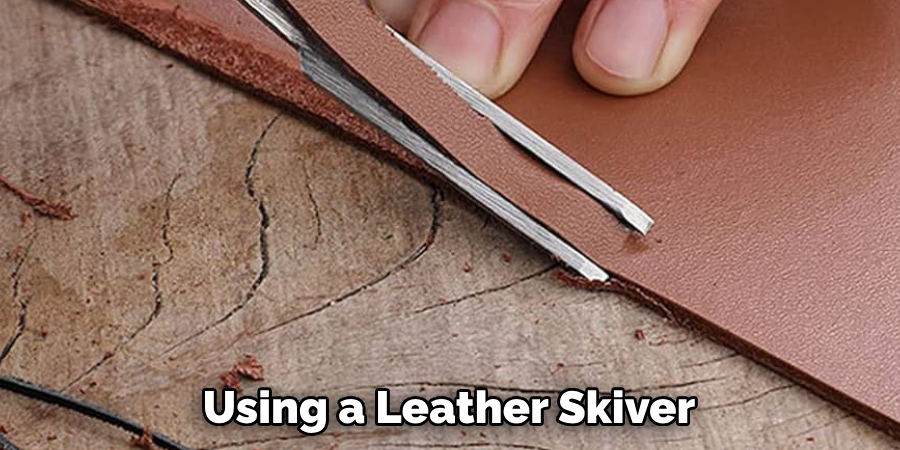
To avoid this problem, take your time and focus on removing small amounts of material at a time until you achieve your desired result.
Conclusion
Using a leather skiver can take some practice, but with these tips and techniques, you’ll shave thin, even slices of leather in no time. Remember to take your time, practice on scraps, and find the right angle and pressure for your blade.
By following these simple steps, you’ll be able to create beautiful, professional-looking leatherwork with ease. Thanks for reading our post about how to use a leather skiver.

